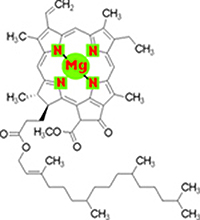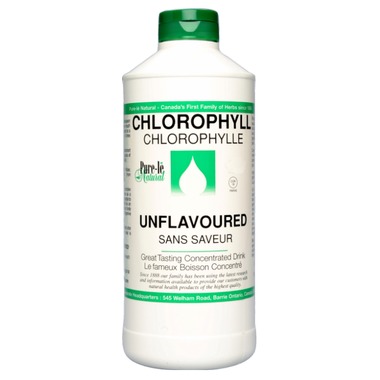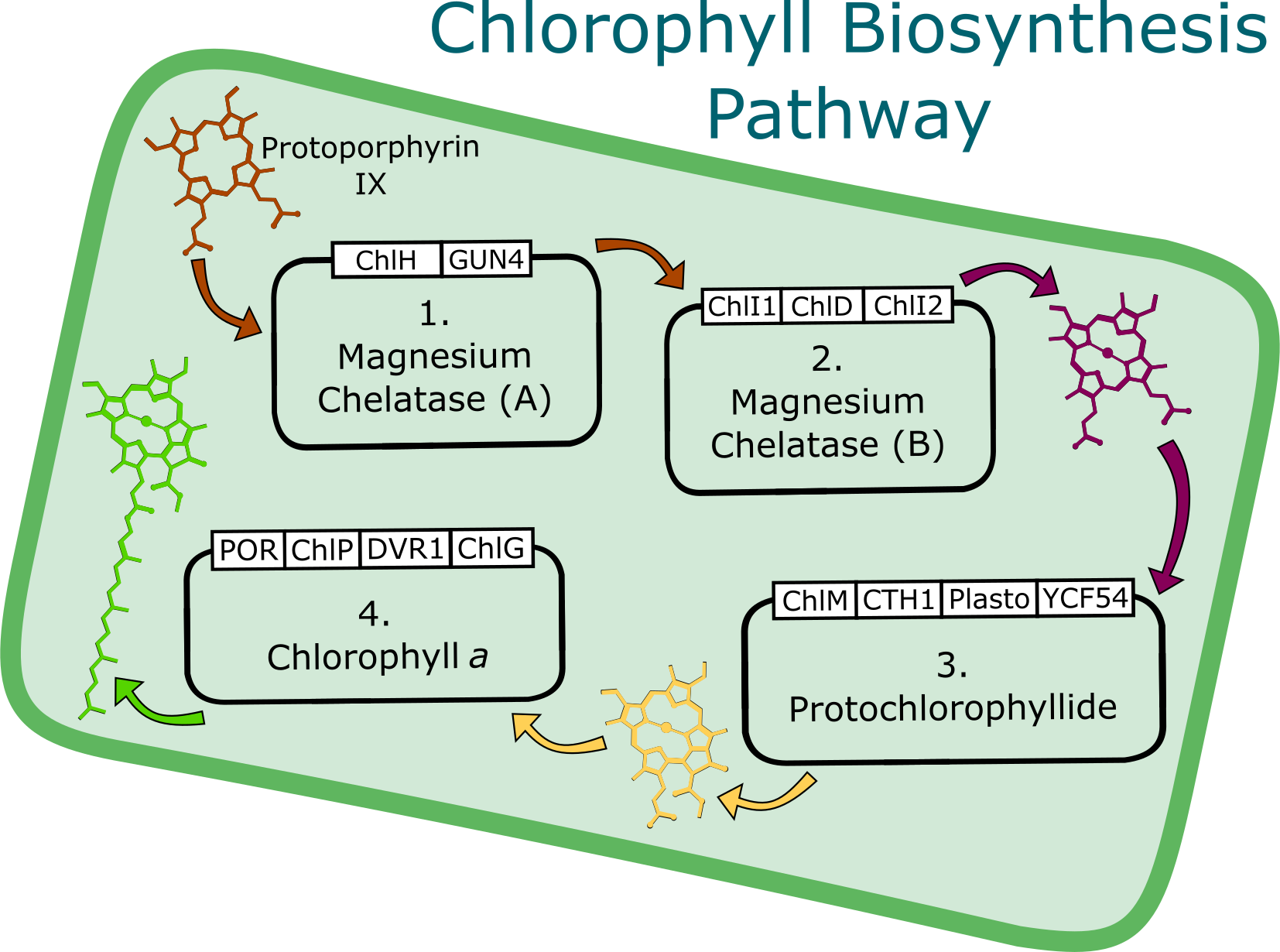cannetix Inc
Well-Known Member
Chlorophyll For Enriching Organic Compost & Soil With Nitrogen + Magnesium

The above image is a molecule of Chlorophyll a, which will be the focus of this argument due to its universal occurrence in higher plants as well as single-celled algae. As you can easily see from its structure, as well as its molecular formula (C55H72O5N4Mg), while like most organic molecules, chlorophyll a consists mainly of Hydrogen and Carbon, it also contains a Magnesium ion encased in a large ring structure known as a Chlorin, which contains 4 Nitrogen atoms. Under normal circumstances, the Chlorophyll content of plants provides little in terms of Nitrogen and Magnesium in compost. This is because plants actually contain relatively small concentrations of this molecule, rarely exceeding 1 milligram of Chlorophyll per gram of raw plant material, and because the Total Nitrogen/Magnesium content of Chlorophyll is low, with the bulk of the mass of the molecules resulting from Carbon & Hydrogen atoms.
Chlorophyll is, however, widely available in concentrated form, commonly sold for its claimed health benefits. Regardless of the accuracy/legitimacy of these claims in regards to human health, concentrated chlorophyll is a valuable product for enriching organic composts with Nitrogen and Magnesium, two abundant plant nutrients which are found in relatively low levels in traditional composts. Although the microbial decomposition and biodegradation of Chlorophyll are, surprisingly, not widely understood, its lack of persistence in the environment means it certainly does undergo rapid decomposition by one or more of the micro-organisms found in soil systems.

In its pure form, Chlorophyll is approximately 6.27% Nitrogen (by weight) and 2.72% Magnesium (by weight). In fertilizer values, N, P and K numbers represent the percentage of the corresponding element by weight (molar mass). This gives pure Chlorophyll an NPK value of approximately 6-0-0, making it an excellent source of 'slow-release' organic Nitrogen and Magnesium as well as, like any other organic molecule, an excellent source of organic matter/Carbon for soil.
Whether or not there are any benefits to using Chlorophyll in this manner vs. an alternative product is still up for debate, however, Chlorophyll does have certain properties that give it some degree of potential value over alternatives such as Gelatin. Gelatin, which is one of the more common sources of Nitrogen used in organic gardening, is an animal by-product and therefore not suitable for "veganic" growers, which may be one potential application of Chlorophyll. Another interesting property of Chlorophyll is its Ratio of Nitrogen to Magnesium, which for obvious reasons are present at a ratio that is close to optimal when considering the main biological role of these elements in plants - Chlorophyll biosynthesis.

https://link.springer.com/chapter/10.1007/978-94-007-1579-0_3 Chlorophyll Biosynthesis in Higher Plants
https://www.intechopen.com/books/bi...d-special-products/chlorophyll-biodegradation Chlorophyll Biodegradation
http://www.mbl.edu/microbialdiversity/files/2012/08/mdiv2010Jaekel.pdf Microbial Biodegradation of Chlorophyll
https://www.britannica.com/science/chlorophyll Chlorophyll
https://www.ncbi.nlm.nih.gov/pmc/articles/PMC4613352/ Critical Issues in the Study of Magnesium Transport Systems and Magnesium Deficiency Symptoms in Plant
https://www.ncbi.nlm.nih.gov/pmc/articles/PMC2887065/ Nitrogen Uptake, Assimilation, and Remobilization in plants

The above image is a molecule of Chlorophyll a, which will be the focus of this argument due to its universal occurrence in higher plants as well as single-celled algae. As you can easily see from its structure, as well as its molecular formula (C55H72O5N4Mg), while like most organic molecules, chlorophyll a consists mainly of Hydrogen and Carbon, it also contains a Magnesium ion encased in a large ring structure known as a Chlorin, which contains 4 Nitrogen atoms. Under normal circumstances, the Chlorophyll content of plants provides little in terms of Nitrogen and Magnesium in compost. This is because plants actually contain relatively small concentrations of this molecule, rarely exceeding 1 milligram of Chlorophyll per gram of raw plant material, and because the Total Nitrogen/Magnesium content of Chlorophyll is low, with the bulk of the mass of the molecules resulting from Carbon & Hydrogen atoms.
Chlorophyll is, however, widely available in concentrated form, commonly sold for its claimed health benefits. Regardless of the accuracy/legitimacy of these claims in regards to human health, concentrated chlorophyll is a valuable product for enriching organic composts with Nitrogen and Magnesium, two abundant plant nutrients which are found in relatively low levels in traditional composts. Although the microbial decomposition and biodegradation of Chlorophyll are, surprisingly, not widely understood, its lack of persistence in the environment means it certainly does undergo rapid decomposition by one or more of the micro-organisms found in soil systems.

In its pure form, Chlorophyll is approximately 6.27% Nitrogen (by weight) and 2.72% Magnesium (by weight). In fertilizer values, N, P and K numbers represent the percentage of the corresponding element by weight (molar mass). This gives pure Chlorophyll an NPK value of approximately 6-0-0, making it an excellent source of 'slow-release' organic Nitrogen and Magnesium as well as, like any other organic molecule, an excellent source of organic matter/Carbon for soil.
Whether or not there are any benefits to using Chlorophyll in this manner vs. an alternative product is still up for debate, however, Chlorophyll does have certain properties that give it some degree of potential value over alternatives such as Gelatin. Gelatin, which is one of the more common sources of Nitrogen used in organic gardening, is an animal by-product and therefore not suitable for "veganic" growers, which may be one potential application of Chlorophyll. Another interesting property of Chlorophyll is its Ratio of Nitrogen to Magnesium, which for obvious reasons are present at a ratio that is close to optimal when considering the main biological role of these elements in plants - Chlorophyll biosynthesis.

https://link.springer.com/chapter/10.1007/978-94-007-1579-0_3 Chlorophyll Biosynthesis in Higher Plants
https://www.intechopen.com/books/bi...d-special-products/chlorophyll-biodegradation Chlorophyll Biodegradation
http://www.mbl.edu/microbialdiversity/files/2012/08/mdiv2010Jaekel.pdf Microbial Biodegradation of Chlorophyll
https://www.britannica.com/science/chlorophyll Chlorophyll
https://www.ncbi.nlm.nih.gov/pmc/articles/PMC4613352/ Critical Issues in the Study of Magnesium Transport Systems and Magnesium Deficiency Symptoms in Plant
https://www.ncbi.nlm.nih.gov/pmc/articles/PMC2887065/ Nitrogen Uptake, Assimilation, and Remobilization in plants

